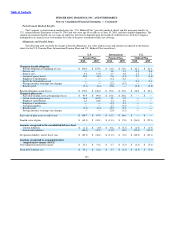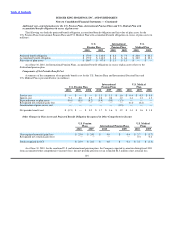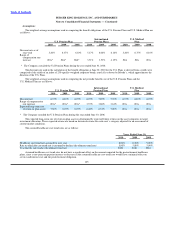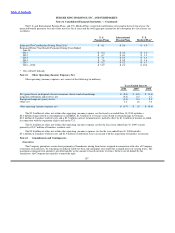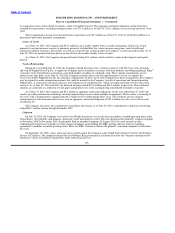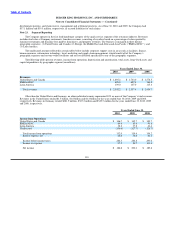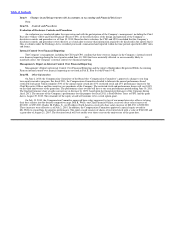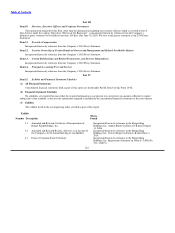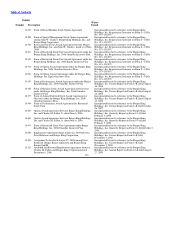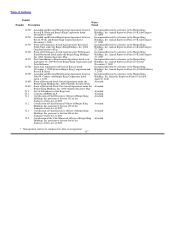Burger King 2010 Annual Report Download - page 112
Download and view the complete annual report
Please find page 112 of the 2010 Burger King annual report below. You can navigate through the pages in the report by either clicking on the pages listed below, or by using the keyword search tool below to find specific information within the annual report.
Table of Contents
BURGER KING HOLDINGS, INC. AND SUBSIDIARIES
Notes to Consolidated Financial Statements — (Continued)
In September 2009, the court issued a decision on the plaintiffs’ motion for class certification. In its decision, the court limited the class
action to the 10 restaurants visited by the named plaintiffs, with a separate class of plaintiffs for each of the 10 restaurants and 10
separate trials. In March 2010, the Company agreed to settle the lawsuit with respect to the 10 restaurants and, in July 2010, the court
gave final approval to the settlement. In April 2010, the Company received a demand from the law firm representing the plaintiffs in the
class action lawsuit, notifying the Company that the firm was prepared to bring a class action covering the other restaurants. If a lawsuit
is filed, the Company intends to vigorously defend against all claims in the lawsuit, but the Company is unable to predict the ultimate
outcome of this litigation.
The National Franchisee Association, Inc. and several individual franchisees filed class action lawsuits on November 10, 2009,
and June 15, 2010, respectively, claiming to represent Burger King franchisees. The lawsuits seek a judicial declaration that the
franchise agreements between BKC and its franchisees do not obligate the franchisees to comply with maximum price points set by
BKC for products on the BK Value Menu sold by the franchisees, specifically the 1/4 lb. Double Cheeseburger and the Buck Double.
The lawsuit filed by the individual franchisees also seeks monetary damages for financial loss incurred by franchisees who were
required to sell those products for no more than $1.00. In June 2010, the court entered an order in the NFA case granting in part BKC’s
motion to dismiss. The court held that BKC had the authority under its franchise agreements to set maximum prices but that, for
purposes of a motion to dismiss, the NFA had asserted a “plausible” claim that BKC’s decision may not have been made in good faith.
Both cases have been consolidated in front of the same judge. While the Company believes its decision to put the 1/4 lb. Double
Cheeseburger and the Buck Double on the BK Value Menu was made in good faith, the Company is unable to predict the ultimate
outcome of these cases.
From time to time, the Company is involved in other legal proceedings arising in the ordinary course of business relating to
matters including, but not limited to, disputes with franchisees, suppliers, employees and customers, as well as disputes over our
intellectual property.
Other
The Company carries insurance programs to cover claims such as workers’ compensation, general liability, automotive liability,
executive risk and property, and is self−insured for healthcare claims for eligible participating employees. Through the use of insurance
program deductibles (ranging from $0.1 million to $2.5 million) and self insurance, the Company retains a significant portion of the
expected losses under these programs.
Insurance reserves have been recorded based on the Company’s estimate of the anticipated ultimate costs to settle all claims, both
reported and incurred−but−not−reported (IBNR), and such reserves include judgments and independent actuarial assumptions about
economic conditions, the frequency or severity of claims and claim
109






